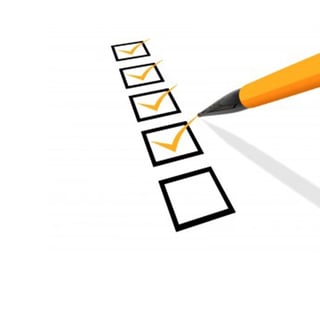 Whether you are seeking CAP Accreditation for the first time or are looking to improve on previous deficiencies in order to maintain accreditation – preparing for a CAP inspection can be a daunting task. There are, however,certain things you can do to ensure you have a successful inspection. We’ve summarized three strategies to prepare for success in your CAP inspection.
Whether you are seeking CAP Accreditation for the first time or are looking to improve on previous deficiencies in order to maintain accreditation – preparing for a CAP inspection can be a daunting task. There are, however,certain things you can do to ensure you have a successful inspection. We’ve summarized three strategies to prepare for success in your CAP inspection.
Perform a thorough self-assessment
CAP inspections occur every two years to maintain accredited status, meaning there is ample time for continuous laboratory improvement in between formal inspections. Performing a comprehensive self-assessment promotes ongoing compliance with CAP requirements and allows you to locate areas of potential process improvement or potential deficiency risks
prior to your biennial inspection. Here are six tips in performing an exemplary self-assessment:
- Select a diverse team to assist in the self-assessment, including new and veteran team members, supervisory staff and non-supervisory staff. If you have an affiliated facility in proximity, consider involving them in your self-inspection for a new perspective.
- Review any previously cited deficiencies to verify effectiveness of past corrective actions as well as proper documentation.
- Ensure all staff members are aware of the location of quality records and policies as well as have the ability to explain pertinent standard operating procedures.
- Check for properly documented and up-to-date training and competency records. If your organization does not have an electronic learning management system, it is critical to take the time to manually ensure all competency records are documented, up-to-date and properly stored. If training and competency records were an area of past deficiencies, consider and EQMS with robust training and learning management capabilities to ensure your staff’s training is always properly documented and up-to-date.
- Repeat the above step for properly reviewed and documented policies and procedures as well as documented equipment maintenance processes.
- Develop and document a corrective action plan in response to cited deficiencies of the self-assessment. Schedule effectiveness verification according to your organization’s protocols to ensure corrective actions were adequate. If you do not have an electronic system to manage CAPA, consider investing in an EQMS with extensive CAPA capabilities to automate this process.
Know where to locate your documentation – quickly!
We’ve all heard the age-old saying, “If it is not properly documented, it did not happen”. The concept applies to the documentation of your laboratory’s quality plan, initial and on-going competency and training, and equipment maintenance and calibration data. Well-organized, properly-stored documentation is critical in seeking CAP Accreditation. If an inspector asks to see the current version of the procedure manual of a specific laboratory policy and you locate an outdated version, it does not matter that you successfully performed a biennial review of the policy or that your staff is operating according to a current version. The inspector will make the assumption that proper policies and procedures are not readily accessible and could pose compliance risks.
Manage your laboratory with a comprehensive EQMS
The most frequently found deficiencies during CAP inspections in 2013 all had the same thing in common. Each common deficiency involved processes that rely on manual, paper-based management to execute. Deficiencies regarding document control practices, training and competency management, equipment maintenance processes, error management, and so on, can all be automated electronically. There are many solutions providers that can offer compliant automation of one select process in your laboratory. Many companies specialize in Document Control, while others can manage your CAPA processes. However, selecting multiple vendors to solve for your pain points in a piece-by-piece manner leaves your organization with a fragmented approach to quality management. Not to mention, shuttling critical data from one system to another is inefficient and leaves room for human error. When it comes to seamless quality management, integration is key. Using a single system, like Title21 Software, to manage your regulated documents, training records, and quality data closes compliance gaps, increases efficiency and supports overall user adoption of an electronic solution. Your IT department and your laboratory staff member only need to implement, adopt and login to one system.





